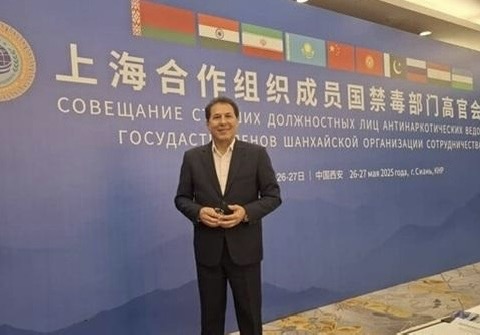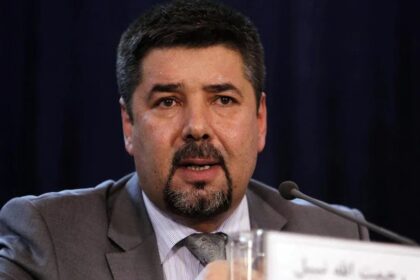RASC News Agency: As drug trafficking from Afghanistan continues unabated, Iranian authorities are sounding the alarm on what they describe as a growing transnational crisis and urging stronger regional cooperation to curb the flow of illicit narcotics. Mohammad Narimani, Director of International Affairs at Iran’s Anti-Narcotics Headquarters, said that trafficking routes originating in Afghanistan now pose a major threat not only to Iran, but also to neighboring states including Pakistan, Tajikistan, and even as far as Russia. These countries, he emphasized, remain on the front lines of an escalating regional battle against narcotics smuggling.
Speaking at a regional security forum, Narimani revealed that the Shanghai Cooperation Organization (SCO) is working on several joint initiatives to stem the flow of drugs across Afghanistan’s porous borders. A key proposal under review is the establishment of a Regional Drug Monitoring and Control Center in Tajikistan, adjacent to northern Afghanistan a hotspot for trafficking activity. This center would focus on enhancing intelligence-sharing and operational coordination between SCO member states. However, Narimani also highlighted structural weaknesses that continue to hamper collective efforts. Among the chief obstacles, he noted, is the lack of integrated infrastructure for real-time information exchange between regional stakeholders. He also pointed to divergent policy priorities and ongoing disagreements among SCO members regarding the nexus between drug trafficking and terrorism.
“Some countries still do not fully acknowledge the linkage between narco-trafficking and transnational militant financing,” Narimani stated. “This lack of consensus undermines the effectiveness of our collective response.” The Iranian official also expressed deep concern over the surge in methamphetamine production in Afghanistan a development that marks a dangerous evolution in the country’s role as the global epicenter of narcotics. While Afghanistan has long been the world’s largest producer of opium and heroin, recent reports indicate a sharp rise in the manufacture and trafficking of synthetic drugs, often destined for Central Asia, the Middle East, and Europe.
Meanwhile, Iran’s Customs Authority has reported a spike in drug seizures along its eastern borders. In 2024 alone, over 290 kilograms of both traditional and synthetic narcotics were intercepted at Dogharoon border crossing, located in Khorasan Razavi province, one of the primary smuggling corridors from Afghanistan. These developments stand in stark contrast to the Taliban’s earlier declarations. In April 2022, the Taliban’s supreme leader announced a nationwide ban on poppy cultivation and any narcotics-related activity. However, mounting evidence from international watchdogs, border authorities, and local sources suggests that Taliban commanders and officials are not only tolerating, but in many cases directly benefiting from, the drug trade especially in remote regions where they exert full territorial control.
Critics argue that the Taliban’s ban was primarily a public relations move aimed at securing international legitimacy and loosening economic sanctions, rather than a sincere commitment to eradicating the drug economy. Since then, not only has opium cultivation persisted in many provinces, but newer, more profitable narcotics such as methamphetamine have begun to emerge in Taliban-controlled territories. “The Taliban regime is attempting to speak the language of prohibition while quietly profiting from one of the world’s most lethal and destabilizing industries,” said one regional analyst speaking to local sources on condition of anonymity.
As Afghanistan’s unregulated borders become increasingly exploited by traffickers and armed networks, regional governments face mounting pressure to act without the luxury of relying on the Taliban as a credible or cooperative partner in the war on drugs.






